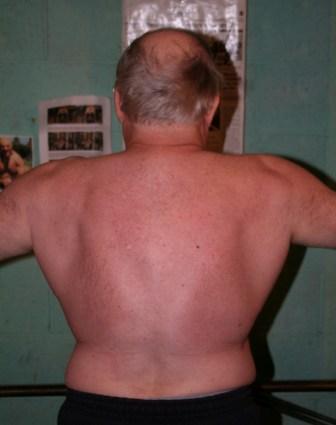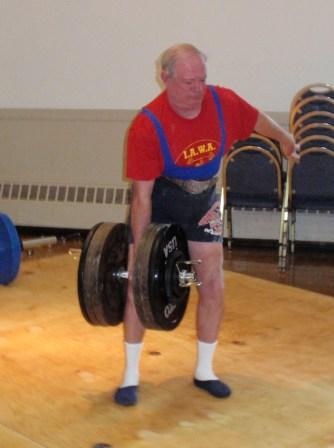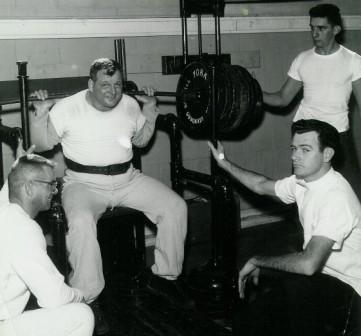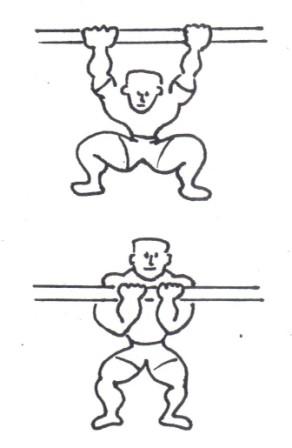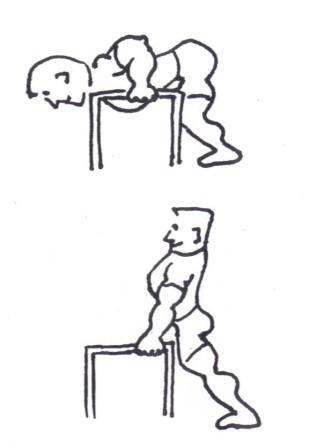World Wide Row
John McKean
John Grimek, our FIRST USAWA Hall-of-Famer (I was there when Howard Prechtel nominated him!) once wrote that the bent over row is a lift where huge poundages are possible, because the movement employs the arms, shoulders, lats, lower back, hips, and thighs. Big John also stated that the row is the absolute best heavy exercise for building the biceps, as well as the upper back. I once met a young super-heavyweight at a power meet who took Grimek’s advice seriously – the lad ONLY trained the heaving row for biceps, and a few bench presses for the triceps. Without exaggeration, his well formed upper arms had to have measured 23 inches!!
Famed writer/lifter Terry Todd did a photo filled article of his deadlift training for winning one of the first National powerlifting contests – yep, the huge poundage-heaving ROW was given prominent mention as his major assistance exercise. Terry was rowing with over 450, as I recall; those pictures left a lasting impression on my young mind! Even today the row is king in building other ALL-ROUND lifts!
We in the USAWA have instituted the bent over row as an official lift during the past season. First to “test” it was Al Myers’ crew, who raved about the dynamic feeling to pull big weight and the genuine enthusiasm for officially performing this grand old exercise! As Al mentioned, it is a natural, basic exercise that we ALL started our weight training with, and requires a unique direction of pull that no other lift fulfills! Later, big Ernie Beath (who really was the one instrumental in pushing for the inception of this barbell keystone as official) and I rowed for records at Art’s Birthday Bash (I think one END of Ernie’s bar was more than I managed!!). At this point in time, world-wide, the IAWA has adopted a “wait-and-see” attitude, but I think our more carefully conceived, clearer version of the rules should tell how simple and direct the bent over row is as a lift.
USAWA Rule for the Bent Over Row
The lift will start at the lifter’s discretion with the bar placed on the platform in front of the lifter. The lifter will grip the bar with an overhand grip with the palms of the hands facing the lifter. The width of grip spacing and feet placement is of the lifter’s choosing, but the feet must be in line with the bar. The body must be in a bent over position at the waist. The upper body must not straighten past 45 degrees parallel to the platform at any time during the lift or it is a disqualification. The legs may be bent during the lift and upon the completion of the lift. The bar is lifted to touch the abdomen or torso by bending the arms. The bar must touch the abdomen higher than the belt, or the navel if a belt is not worn. It is a disqualification if the belt supports the bar at the abdomen upon the finish of the lift. The lift ends by an official’s command when the bar is held motionless at the abdomen or chest.
Not only can our All-rounders benefit by direct effort applied to rows, but many who would come to us for weight training programs will make huge strides in OVERALL strength by utilizing the row as a LIFT. As such, of course, we can draw these athletes into our fold to display prideful gains on a weightlifting platform!! But these big bent over pulls can certainly serve wrestlers, martial artists, track and field athletes, football players, etc. I, for one, would love to see some of these new guys at our record day meets! Of course, it won’t hurt our image, either, to start associating IAWA lifters with that huge, old time “V” taper derived from concentrated, high-powered rows!
